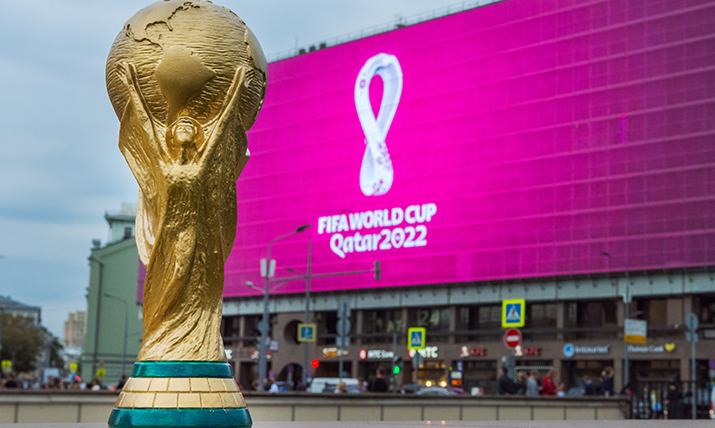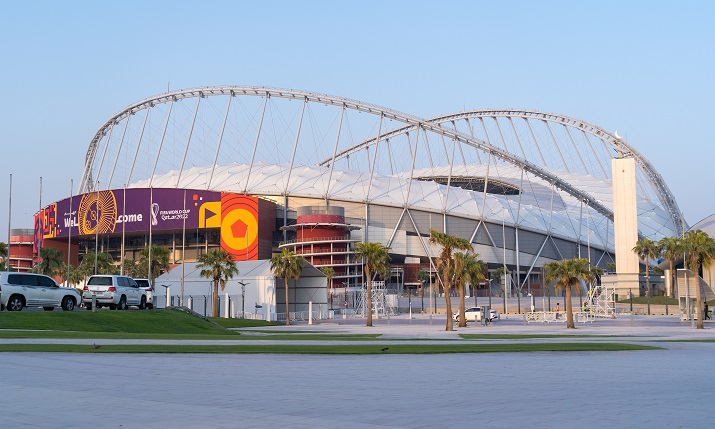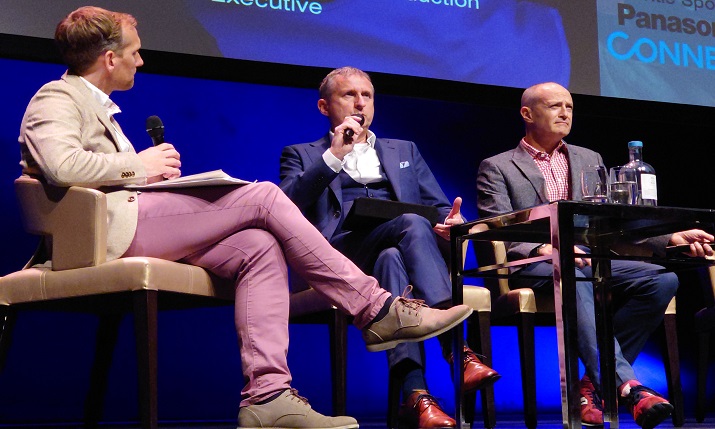Qatar 2022: FIFA’s focus on fans

One of the standout features of the upcoming Qatar World Cup is the compact nature of the tournament. All of the games will be played in Doha within a relatively condensed timescale – the shortest since 1978 – with the final taking place 28 days after the opening match between hosts Qatar and Ecuador, on 20 November.
This is potentially good news for fans making the journey to the Middle East, providing the opportunity to attend two matches per day. And it’s the fans, says FIFA, that will be the focus of the 2022 tournament.
“We have put together our production plans based on what the broadcasters tell us they want,” says Florin Mitu, FIFA, head of host broadcast production. “And what they tell us most, is that they want to see as much as possible to do with fans interacting with each other, and with screens of all sizes.”
“You will see significantly more content around the fan journey and significantly more pre- match…we want to extend the build up to the game because it is so important to broadcasters”
The corniche in Doha is providing the setting for FIFA’s broadcast partners outside presentation facilities, along with FIFA’s official ‘Fan Fest’ area which is expected to host in the region of 120,000 fans from all nations each day.
Speaking at the recent Sky Sports and SVG Europe DACH Summit, Mitu says: “In previous World Cups each city would host fans, but in Qatar there is only one. So, all the fans from different nations will be in one place, and for those in Qatar who are not in the stadium, [the Fan Fest] will be the place to watch. Having all fans in the same city has never happened before and presents another opportunity for us to rethink how we cover the fans, and that is a message we got strongly from broadcasters; they wanted us to invest as much as possible in gathering fan footage and bringing it back to the IBC and making it available to them.”
Dan Miodownik, chief executive of Host Broadcast Services (HBS), which has served as host broadcaster of the 2002, 2006, 2010, 2014 and 2018 editions of the World Cup, says every event comes with different expectations and opportunities.
Speaking during SVG Europe’s Sport Production Summit, he says: “The expectation from broadcasters is that they see this unique opportunity of a single event for us to explore and they see fans as central to that. There has been massive investment in really opening the door to the fans journey, whether those fans are in a souk in Doha, on the metro travelling to game, at the match; there are significant resources devoted to really extending the experience for broadcasters.

The Khalifa International Stadium, Doha
“Our job is to help them do their job,” continues Miodownik. “We are not broadcasters, we are helping them to achieve what they want for their audiences, so you will see significantly more content around the fan journey and significantly more pre- match such as the teams leaving the hotels, with drones, helicopters, motorbikes following busses. We really want to extend the build up to the game because it is so important to broadcasters and their expectations for the event.”
Mitu adds: “We will be out and about with story crews, and they will be focusing on fans. We will have live production at the Fan Fest as well as two ENG crews. The idea is to interact with fans and for them to tell us what they thought of the match and to make predictions about upcoming fixtures. We will also have a fan booth at the Fan Fest and outside the stadiums for fans to predict the score, comment on line-ups and so on.
“In order to create a home for all this fan footage, we have created a new ‘fan coverage’ channel as part of the multipackage channel offering which exists at every World Cup. So, if you take that feed, you will have footage of fans from all countries.”
The compact nature of the World Cup, which will feature 32 teams and 64 games, has presented FIFA and its host broadcaster with some challenges as well as some opportunities, says Mitu.
The Main Media Centre (MMC) together with the IBC – which will be home to 74 broadcasters – are both located at the Qatar National Convention Centre (QNCC), which is around 6 miles from the corniche. “That is an opportunity that we recognised, of being able to locate all the media will together in one place. They would like to go to as many matches as possible, but the opportunity to be at the IBC where all the feeds are delivered is a great chance to sit, work, see all the matches and attend the press conferences before each match.”
All the teams competing in the World Cup have been advised that they will need to make their coach and one player available to travel to the QNCC the day prior to each match. “We will have four press conference rooms to allow for them to be interviewed which has never happened before,” says Mitu.
“Within one hour, broadcasters and journalists can go to any stadium; they can move from a desk in the media centre to a seat in the media tribune. We will still have media centres in each stadium, which is the traditional way World Cups have operated in the past, but we have created this new opportunity for the media to be located together with the broadcasters as well. They can interact – journalists from different countries know each other, and journalists from written media contribute to broadcast, so these arrangements help to facilitate that process.”
With such a short timescale for the 2022 tournament, groundskeepers will have their work cut out. To help to keep pitches in good condition, some changes have been made to the way content will be captured the day before prior to a match.
Says Mitu: “Activities that usually take place at a stadium before the match such as training sessions and press conferences will not be happening at the stadiums, so that has created a challenge to find 32 training grounds. And it’s been a challenge for us, as we have then been required to pretty much double up on the broadcast infrastructure in stadiums that previously would have been used to cover matchday minus-1 activities. Instead, we must equip the 32 training camps and to network them by fibre to the QNCC.”
UHD HDR
When considering the format in which to capture and deliver World Cup content, FIFA and HBS have taken into account the requirements of rights holders.
Says Miodownik: “We had a deep discussion two-and-a-half, three years ago, where we tried to forecast where broadcast is going and where technology is headed as well. We know big events like the World Cup and the Olympics provide an opportunity for regeneration and a chance to introduce into the broadcast chain valuable new equipment. We also look at how broadcasters who will air this event are doing, as opposed to what the pay-TV broadcasters are up to.

Florin Mitu (centre) speaking at Sport Production Summit with Dan Miodownik (right)
“We made what I think is the correct choice reasonably early, with the decision to opt for a single layer UHD-HDR workflow for the main match feed, which we felt guaranteed the best quality in all formats and I think that has been borne out in all the offline tests we have done, and at the Arab Cup (a tournament that took place in November and December 2021 as a prelude to Qatar 2022).
“We must also be practical and take into consideration the availability of equipment, as well as the financial and logistical aspects. With that in mind and the sheer number of stadiums, matches and camps during a World Cup, the rest of the footage will all be 1080p HDR, so all multifeeds, the ENG content, matchday -1 content, will be 1080p which I think industry recognises as being reasonable and the highest quality most will need.
“It’s also worth mentioning one of the more delicate topics, which was look up tables (LUTs) and how to sympathetically deal with colour between the different formats, especially between HDR and SDR because there are different view on this. In the end, we have come up with an optimised one which we feel deals with the needs of the many. But we’re being practical here – it’s a World Cup and there are a lot of broadcasters with different expectations and that is one of those areas where the industry still needs to align, because it is a complication and something where you do have to compromise.”
